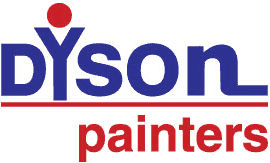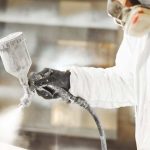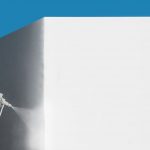If you are planning a commercial or residential painting project, you might wonder whether to use an airless paint sprayer or a roller. Both options have advantages and disadvantages, and choosing the right tool depends on various factors such as the type of surface, project size, skill level, and desired finish. This comprehensive guide will compare rollers and airless spray painting to help you decide on your painting needs.
Airless Paint Sprayer vs Roller?

The choice between an airless paint sprayer and a roller primarily comes down to the specific requirements of your painting project. Here are some important pros and cons of each option:
Airless Paint Sprayer
Airless paint sprayers are popular among professional painters in Hobart due to their efficiency and speed. They use high pressure to atomise paint, resulting in a fine mist that provides even coverage on various surfaces. Here are some key points to consider:
- Efficiency and Speed: Airless sprayers can cover larger areas in less time than rollers. This makes them preferred for large-scale projects like painting walls, ceilings, fences, or exteriors.
- Smooth and Even Finish: They produce a professional-looking finish with no visible brush or roller marks. The fine mist allows the paint to adhere evenly to the surface, resulting in a smooth appearance.
- Adaptable: They are versatile and can handle various coatings, including latex, acrylics, enamels, and stains. Airless spray painting suits different surfaces like walls, wood, metal, and concrete.
- Difficult Surfaces: They excel at coating textured or uneven surfaces, such as stucco or rough concrete, where rollers might struggle to provide complete coverage.
- Over-spray and Preparation: Using an airless sprayer requires careful masking and protection of surrounding areas to prevent overspray. Proper preparation, including covering furniture and floors, is essential to minimise mess.
Roller

Rollers have long been a popular choice for painting projects and offer their own set of benefits. They are especially suitable for smaller areas and projects with specific requirements. Here are some advantages of using them:
- Precise Application: Rollers provide better control and precision, making them ideal for cutting edges, corners, and intricate areas. They allow you to apply paint exactly where it is needed.
- Less Overspray and Clean-Up: Unlike sprayers, they can produce minimal overspray, reducing the risk of paint mist settling on other surfaces. Additionally, clean-up is generally easier and less time-consuming.
- Cost-effective: They are generally more affordable than airless sprayers, making them a budget-friendly option for smaller projects or those with limited resources.
- Beginner-friendly: They are easier for beginners and DIY enthusiasts. They require less skill and experience to achieve satisfactory results compared to sprayers.
- Noise and Maintenance: They operate quietly, which can be advantageous in environments where noise is a concern. Additionally, they require minimal maintenance and are easier to clean after use.
Should A Beginner Use a Roller?
Yes, professional painters in Hobart recommend using rollers for beginners or individuals with limited painting experience. Rollers are user-friendly and provide more control, allowing newbies to practice and achieve satisfactory results. You can quickly learn to use rollers effectively and efficiently with proper technique and some practice.
Is Airless Spray Painting a Good Option for Newbies?
While airless paint sprayers offer numerous advantages, they can be more challenging for beginners to master. Sprayers require proper technique, including maintaining the right distance and speed while spraying, to achieve a smooth and even finish. Novices may find it more difficult to control overspray and achieve precise application. However, with sufficient practice and understanding of the equipment, beginners can also try airless spray painting.
When Should You Use a Roller?
Rollers are suitable for various painting projects, especially when:
- Working on smaller areas or tight spaces where sprayers might be impractical.
- Achieving precise application, such as cutting corners, edges, or around fixtures.
- Minimising overspray and protecting adjacent surfaces.
- Painting textured surfaces that require additional pressure for proper coverage.
- Keeping noise levels low as rollers operate quietly.
Method to Use a Roller
To achieve optimal results with a roller, follow these steps:
- Preparation: Clean the surface and ensure it is free from dirt, dust, and debris. Fill any holes or cracks and sand rough areas for a smooth finish. Use cloths or protective sheets to cover adjacent surfaces, furniture, and floors.
- Priming (if required): Apply a suitable primer to improve paint adhesion and enhance durability, especially for bare surfaces or drastic colour changes.
- Pouring the paint: Pour the paint into a paint tray and roll the roller back and forth to evenly distribute the paint on the roller sleeve. Avoid overloading it to prevent drips.
- Painting technique: Start painting from the top of the surface, working in small sections. Use long, even strokes to apply the paint vertically, then roll horizontally to achieve an even coat. Apply light pressure to avoid excessive paint buildup or roller marks.
- Overlap: Always slightly overlap each stroke to ensure complete coverage and avoid visible lines. This technique helps achieve a seamless finish.
- Multiple coats: If necessary, allow each coat to dry completely before applying subsequent coats. Follow the paint manufacturer’s recommendations for drying time between coats.
The Speed Difference Between Sprayer & Roller
The speed difference between an airless paint sprayer and a roller can vary depending on various factors such as:
- The size of the surface area being painted
- The type of paint being used
- The experience of the painter
- The specific equipment being used
In terms of a specific speed comparison, it is difficult to provide exact numbers as it depends on the factors mentioned earlier. However, as a rough estimate, airless spray painting can typically cover around 1,000 to 2,000 square feet per hour, whereas rollers generally cover around 300 to 400 square feet per hour. These numbers are approximate and can vary based on the circumstances of the painting project.
Paint Coverage of Sprayer & Roller
Both airless spray painting and rolling can provide good paint coverage, but the method of application and surface type can affect the final result. Airless sprayers excel at providing even coverage on various surfaces, including textured or uneven ones. Rollers are also effective at covering surfaces but may require additional effort to achieve a complete range on rough or porous surfaces.
What About Safety When Using Airless Spray Painting?
When using airless spray painting equipment, safety should be a top priority. Here are some essential safety precautions to follow:
- Protective Gear: Wear appropriate personal protective equipment (PPE) such as safety goggles, a respirator or mask, gloves, and coveralls to protect yourself from overspray and paint fumes.
- Ventilation: Ensure proper ventilation in the painting area to minimise the inhalation of fumes. If working indoors, open windows or use fans to promote airflow.
- Masking and Covering: Properly mask and cover adjacent surfaces, furniture, and floors to protect them from overspray.
- Pressure and Tip Selection: Follow the manufacturer’s guidelines for selecting the appropriate pressure settings and spray tips for your specific project. Using incorrect settings can result in excessive overspray or an uneven finish.
- Fire Safety: Ensure no open flames or flammable materials are in the painting area. Keep fire extinguishers readily available in case of emergencies.
- Cleaning: Thoroughly clean and maintain the airless spray painting equipment according to the manufacturer’s instructions. Proper cleaning ensures safe and efficient operation.
Get a Free Quote Now!
FAQs
Q: Is it better to paint with a sprayer or roller?
A: The choice depends on the project requirements. Sprayers are faster and more efficient for large areas, while rollers provide more control and precision. Ultimately, the choice depends on the specific requirements of the project, the desired finish, and the painter’s experience and comfort level with the respective tools.
Q: Is airless spray painting worth it?
A: Airless spray painting can be worth it for large projects, providing efficiency, speed, and a smooth finish. It is versatile, accommodating various paint types. While initial costs may be higher, it can save on labor and time in the long run. Skill and experience are important for optimal results, and proper preparation and cleanup are necessary to avoid overspray.
Q: Does an airless sprayer use more paint than a roller?
A: Airless sprayers tend to use more paint due to overspray, while rollers can be more conservative with paint usage.
Q: How much paint is lost when spraying?
A: The amount of paint lost during airless spray painting depends on factors such as overspray, surface texture, and the skill of the operator. However, it is generally advisable to account for some paint loss when using a sprayer.
Q: Is spraying better than brushing?
A: Spraying is often faster and more efficient than brushing, especially for large areas. However, brushing provides more control and can be better for smaller, detailed work.
Q: How long does it take to paint a room with a sprayer?
A: The time required to paint a room with a sprayer depends on factors such as the size of the room, the complexity of the surfaces, and the operator’s skill level. Generally, using a sprayer can significantly reduce the painting time compared to using a roller or brush.
Q: Do professional painters use sprayers?
A: Many professional painters in Hobart use airless paint sprayers for their efficiency and ability to handle large-scale projects.
Q: Are paint sprayers good for indoor use?
A: Paint sprayers can be used indoors, but proper preparation, ventilation, and masking are essential to prevent overspray and protect adjacent surfaces.
Q: Can you mix spray paint with regular paint?
A: Professional painters in Hobart do not recommend mixing airless spray paint with regular paint unless specifically mentioned by the paint manufacturer. Both have different formulations and viscosities, which can affect the performance and finish of the paint.
Quick Comparison Chart
| Criteria | Rollers | Airless Paint Sprayers |
| Application Speed | Slower | Faster |
| Coverage Area | Limited to smaller areas | Suitable for large areas |
| Finish Quality | Good for textured surfaces | Smooth and even finish |
| Versatility | Limited paint types | Accommodates various paints |
| Labor Intensity | Moderate effort required | Less physical effort |
| Overspray | Minimal | Potential for overspray |
| Skill Requirement | Easier for beginners | Requires practice and skill |
| Preparation | Less masking required | Extensive masking needed |
| Cleanup | Easier and quicker | More time-consuming |
| Cost | Lower upfront cost | Higher upfront cost |
This comprehensive comparison chart aims to provide homeowners and commercial property owners with a clear understanding of the differences between rollers and airless paint sprayers, enabling them to make well-informed decisions when selecting professional painting services.
Why Choose Us for Perfect Airless Spray Painting
If you’re looking for the perfect airless spray painters in Hobart for your residential or commercial project, look no further. Dyson Painters is your go-to choice for top-quality results and exceptional service.
With years of experience and a team of skilled painters, we specialise in airless spray painting, rolling, and other techniques that deliver stunning finishes and efficient coverage. Whether you have a large-scale project or intricate detailing work, we have the expertise to handle it all.
Here are the reasons you should us:
- Expertise: Our painters in Hobart are highly trained and experienced in different painting techniques, ensuring flawless results every time.
- Quality Materials: We use only the finest quality paints and materials, ensuring long-lasting durability and a beautiful finish that exceeds your expectations.
- Efficiency: With our airless spray painting equipment, we can complete projects in a fraction of the time compared to traditional methods without compromising on quality.
- Attention to Detail: We pay meticulous attention to detail, ensuring precise application and a seamless finish that enhances the aesthetic appeal of your space.
- Customer Satisfaction: Our top priority is your satisfaction. We listen to your needs, offer professional advice, and go above and beyond to deliver results that surpass your expectations.
Experience the difference with our professional painting services in Hobart. Contact us today for a consultation, and let us transform your space with our expertise and attention to detail.
Also Read:
Guide to Efficient Airless Spray Painting Techniques (+ FAQs)
How Airless Spray Painting Can Help You Save Time and Money
Everything You Need To Know About Airless Spray Painting




